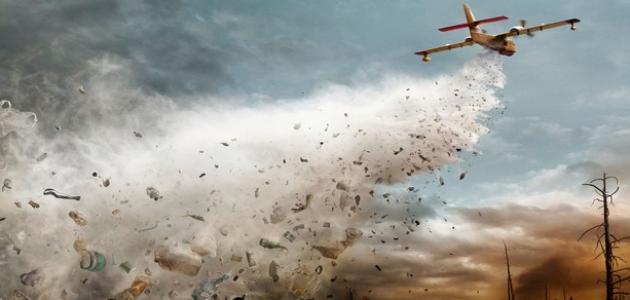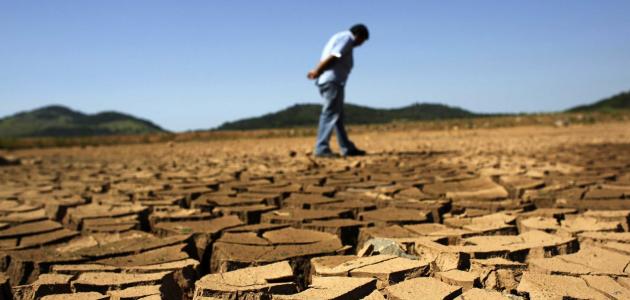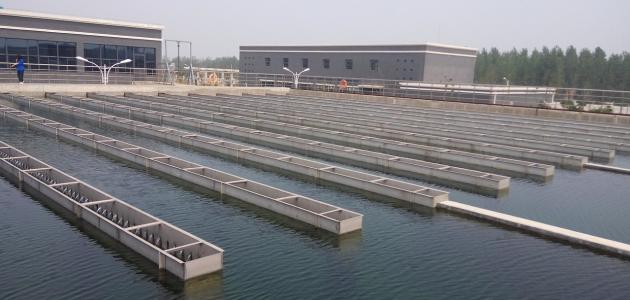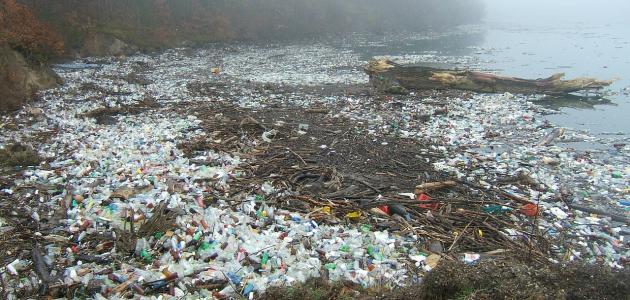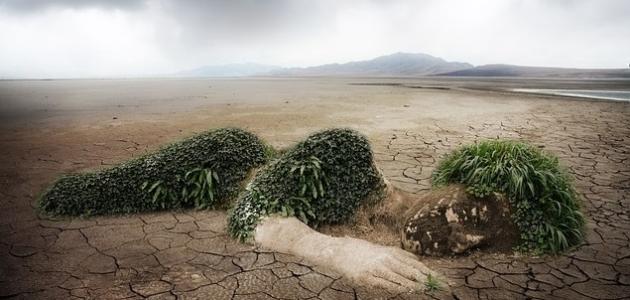Manifestations of pollution and its dangers
Pollution in all its forms - water, air, and soil pollution - causes many risks to living organisms, including humans. It is responsible for 40% of the death rate around the world, according to studies by researchers at Cornell University, and according to the World Health Organization. (World Health Organization) The phenomenon of environmental degradation, along with the increasing population around the world, has been behind the rapid increase in diseases affecting humanity. Both of the previous factors have caused malnutrition, and increased the susceptibility of about 3.7 billion people around the world to disease.
Manifestations of air pollution and its dangers
Some natural activities cause an increase in air pollution, including: volcanoes, forest fires, pollen, dust, and different weather patterns such as temperature inversion, which in turn contributes to fixing pollution in its place, and nature is not the only one responsible. Regarding air pollution, various human activities are another primary source of air pollution.
Air pollution risks to human health
Air pollution causes many negative effects on human health, and their impact varies from one person to another. Adults and people in good health may not suffer from problems in the long term if they are exposed to low levels of pollution for short periods, but the greatest harm may befall people who They suffer from heart or respiratory problems, even if the exposure is to low levels of pollution or for short periods. Children and young adults are also more likely than others to be affected by air pollution, and exposure to high amounts of air pollution or for long periods may lead to human injury. Serious diseases, and in some cases may lead to death.
Read also:What are the sources of water pollutionAir pollution risks to the environment
The impact of air pollution is not limited to human health, but extends beyond it to threaten the lives of plants, animals, and the entire environment. When fine suspended particles (in English: Suspended Particles) and gases resulting from human activities and some natural activities are emitted, such as: nitrogen oxides, hydrogen sulfide, and Sulfur, carbon monoxide, volatile organic compounds, and others enter the atmosphere. They dissolve in the water vapor that makes up the clouds and interact with it, then falling in the form of acid rain, the hydrogen number (pH) of which is less than 5. This is the pH that leads to Cause corrosion and damage to buildings and forests.
Air pollution risks to the economy
Air pollution also affects the economic situation of the country indirectly, as the economy grows and prospers when the workforce enjoys good health and wellness, and when the agricultural sector based on the cultivation of crops dependent on natural resources is managed effectively, but air pollution reduces the productivity of agricultural crops and prepared farms. For commercial purposes, on which billions of money are spent every year, it also harms human health and their ability to carry out their work, which results in huge losses in the economic sector.
Manifestations of water pollution and its dangers
Sometimes, water pollution may appear clearly visible, such as oil spills in the seas and oceans, but in general it cannot be observed with the naked eye, so specialists have relied on two methods to determine whether the water is polluted or not. The first method is based on taking a sample of the water. And measuring the concentrations of various chemicals in it. If the results show that the concentration of chemicals is large and higher than its normal level, this means that the water is polluted. These measurements are called chemical indicators of water quality. The other method is referred to as biological indicators of water quality, and is based on examining fish. , insects, and invertebrates that live in water. If it is found that an aquatic environment supports different forms of aquatic organisms within it, this means that the water quality is good. However, if the environment lacks aquatic diversity, this means that the water quality is poor and full of pollutants, and the consequence is Water pollution causes a number of negative effects related to many life matters, such as:
Read also:Methods of preserving the environment in IslamDangers of water pollution to humans
Humans play a major role in water pollution, due to its negative impact on it. According to a report issued by the World Health Organization published in 2017, there are about 2.1 billion people around the world who do not have access to safe drinking water. Another report published in 2019 states that 785 million people around The world lacks basic drinking water, and pollution leads to many diseases in humans. The World Health Organization has reported in this regard that 120,000 people around the world die annually from cholera.
Dangers of water pollution to the environment
Aquatic animals and plants are the groups most affected by water pollution, as the removal or addition of some microorganisms can seriously affect them, and the ecosystem as a whole. For example, increasing nutrients in the water leads to increased growth of marine algae and depletion of the percentage of oxygen in the water. And thus the death of fish and other aquatic organisms. Many studies belonging to the Center for Biological Diversity provide an overview of the damage caused by oil spills in water bays. In 2010, about 82,000 birds were affected, about 25,900 marine animals, and about 6,165 A sea turtle, and unknown numbers of fish and invertebrates as a result of such leaks.
Read also:Why should you conserve the forest?Water pollution may also cause an imbalance in food chains through the transfer of toxins from one level to another higher than it, and this may lead to the cancellation of entire parts of food chains, either through excessive growth of some types of organisms due to the death of predators that could feed on them, Or the death of prey - before being eaten - on which predators could feed.
The dangers of water pollution to the economy
The process of rehabilitating and reclaiming water bodies is a very expensive process from a financial standpoint. For example, some governments have collected more than one million tons of polluted water in tanks in order to treat it, and have announced that this process will cost the state treasury about 660 billion dollars. In general, the cost of purifying and treating drinking water is very expensive, in addition to the costs resulting from treating diseases resulting from pollution.
Manifestations of soil pollution and its dangers
Pesticides, petroleum products, radon gas, asbestos, lead, chromated copper arsenate, and creosote are common forms of pollutants found in urban soil. Soil has a number of negative effects in many areas, such as:
Dangers of soil pollution to humans
Pollutants in soil are available in three states of matter: solid, liquid, and gaseous, and here lies the danger, as they may be transmitted to humans through the skin or respiratory tracts, and as a result of exposure to these pollutants, humans may develop a set of symptoms in the short term, such as headaches, nausea, and vomiting. Cough, chest pain, eye and skin irritation, and a feeling of weakness and fatigue. However, in the long term, exposure to high levels may cause permanent damage to the nervous system, damage to some vital organs, and other diseases.
Dangers of soil pollution to living organisms
Pollution causes a lack of nutrients in the soil and an increase in its salinity, thus hindering the growth of plants. Soil contamination with inorganic aluminum may cause the transfer of toxic substances to the plant and their accumulation therein in high concentrations in a process called bioaccumulation (in English: Bioaccumulation), and then these high concentrations of pollutants are transferred It crosses the food chain to herbivores, then to higher levels, leading to the extinction of some species in the food chains, and may eventually reach humans, causing many diseases.
Dangers of soil pollution to the environment
The soil may contain a number of volatile pollutants that may be transported to the atmosphere through the wind, or may seep into groundwater, and this means that the soil contributes to water and air pollution directly. Among these pollutants is ammonia gas, which may reach the atmosphere to form harmful acid rain. In the soil, acidic soil is unsuitable for many microorganisms responsible for improving soil texture and decomposing organic matter. Ultimately, soil pollution means a decrease in agricultural yields, and sometimes the production of crops that are unfit for human consumption.
